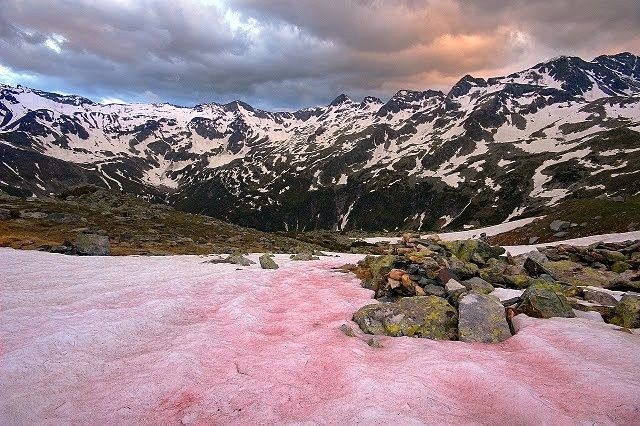Red snow is a unique phenomenon caused by blooms of red algae that live on the surface of snow. Now, researchers from Japan have developed a model to predict the occurrence of red snow events. In a recent study published in the Journal of Geophysical Research: Biogeosciences, researchers from Institute of Industrial Science, The University of Tokyo found that red snow algal blooms are associated with the duration of snow melt and the timing of new snowfall.
Red algae are photosynthetic microbes that live on the surface of snow and ice. The algae appear in the spring on thawing snow surfaces and can speed up snow melt as they darken the snow surface. The dark surface becomes warmer and snow melts faster. The abundance of snow algae is influenced by factors such as the snow conditions, like snow depth and nutrient availability, as well as local meteorological conditions. Read the full article here.

